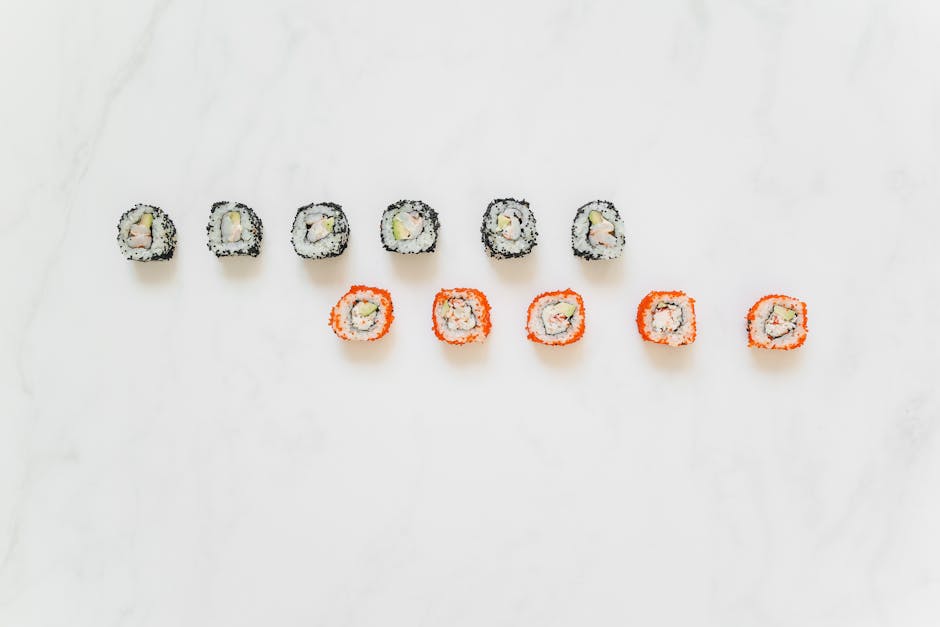Get ready to embark on a culinary journey to Japan with this simple yet incredibly flavorful Teriyaki Chicken recipe! Teriyaki, a cornerstone of Japanese cuisine, isn’t just a dish; it’s a testament to the country’s rich culinary history and its emphasis on fresh, high-quality ingredients. Its origins can be traced back to the 17th century, during the Edo period, when soy sauce, a key ingredient, became more readily available. Early forms of teriyaki likely involved grilling or broiling fish or meat, basting it with a sweet and savory sauce. While the exact historical evolution is debated, what’s clear is its gradual development into the beloved dish we know today.
The word teriyaki itself is a combination of two Japanese words: teri (meaning glossy or luster ) and yaki (meaning grilled or broiled ). This perfectly captures the essence of the dish: meat with a beautifully glazed, shimmering surface. Over the years, teriyaki has transcended its humble beginnings to become a global phenomenon. While precise statistics on global consumption are difficult to obtain, its popularity is undeniable, evident in the countless variations and adaptations found worldwide, from teriyaki burgers to teriyaki-glazed vegetables. It’s a testament to its versatility and deliciousness.
Beyond its deliciousness, teriyaki holds significant cultural importance in Japan. It’s frequently served at celebratory occasions and family gatherings, highlighting the importance of sharing meals and fostering connections. Moreover, the meticulous preparation and attention to detail reflect Japanese culinary philosophy, emphasizing the balance of flavors and the appreciation of seasonal ingredients. This recipe aims to capture the authentic essence of teriyaki, offering a simple yet satisfying experience that allows you to appreciate the rich history and cultural significance behind this iconic Japanese dish. It’s more than just a meal; it’s a taste of Japanese tradition.
Ingredients and Measurements
This Simple Japanese Teriyaki Chicken recipe relies on fresh, high-quality ingredients to deliver authentic flavor. Precise measurements are key to achieving the perfect balance of sweet, savory, and umami. Don’t be afraid to adjust to your taste preferences, however, once you’ve mastered the base recipe.
For the Chicken, you’ll need approximately 1.5 lbs (680g) of boneless, skinless chicken thighs. Chicken thighs are recommended because they remain juicy and tender even with longer cooking times. You can substitute with breasts, but be mindful of cooking time to avoid dryness. Cut the chicken into 1-inch (2.5cm) pieces for even cooking. Larger pieces will require longer cooking times.
The Teriyaki Sauce is where the magic happens. We’ll be making a delicious homemade version, far superior to store-bought options. You’ll need:
- 1/2 cup (120ml) of soy sauce (use a low-sodium variety if preferred)
- 1/4 cup (60ml) of mirin (sweet rice wine – essential for authentic flavor)
- 1/4 cup (60ml) of sake (Japanese rice wine – can be substituted with dry sherry)
- 2 tablespoons (30g) of granulated sugar (adjust to your preferred sweetness level)
- 1 tablespoon (15ml) of cornstarch (helps thicken the sauce)
- 1 tablespoon (15ml) of grated fresh ginger (adds a delightful zing)
- 1 clove garlic, minced (optional, but enhances the savory notes)
For the Garnish (optional, but highly recommended):
- 1 tablespoon (15ml) of toasted sesame seeds
- Chopped green onions
Important Note: Ensure all your ingredients are at room temperature before starting. This allows for better blending and a smoother cooking process. Also, taste the teriyaki sauce before adding it to the chicken and adjust the sweetness or saltiness as needed. A final taste test of the chicken before serving is also recommended. Enjoy!
Marinade Preparation
The success of this Simple Japanese Teriyaki Chicken recipe hinges on a well-balanced marinade. This section details the precise measurements and techniques for creating a flavorful marinade that will tenderize and infuse your chicken with delicious teriyaki goodness.
For this recipe, we’ll be using a classic teriyaki marinade comprised of readily available ingredients. Begin by combining the following in a medium-sized bowl: 1/4 cup of soy sauce (low sodium preferred for better flavor control), 1/4 cup of mirin (sweet rice wine), and 2 tablespoons of sake (Japanese rice wine, optional but recommended for depth of flavor). If you don’t have sake, you can substitute with an equal amount of dry sherry or even white wine, though the flavor profile will subtly differ.
Next, add 2 tablespoons of brown sugar to the mixture. Brown sugar provides a richer, more complex sweetness than white sugar and complements the savory elements of the marinade beautifully. Whisk the mixture thoroughly until the sugar is completely dissolved. This ensures even distribution of sweetness throughout the marinade.
Now, it’s time to incorporate the aromatics. Add 1 tablespoon of grated fresh ginger and 2 cloves of minced garlic. Fresh ginger and garlic are essential for that authentic teriyaki flavor; pre-minced garlic from a jar can be used in a pinch, but fresh offers a superior taste and aroma.
Finally, for an extra layer of flavor complexity, consider adding a 1/2 teaspoon of ground black pepper. This enhances the savory notes and rounds out the overall taste profile. Once again, whisk everything together to ensure a uniform marinade. The mixture should be relatively thin, allowing for easy penetration into the chicken.
Important Note: The longer your chicken marinates, the more flavorful it will become. Ideally, marinate the chicken for at least 30 minutes, but for optimal results, marinate for 2-4 hours in the refrigerator. Marinating for longer than 4 hours is generally not recommended, as it can make the chicken overly salty or soft. Do not marinate at room temperature.
Chicken Preparation
Proper chicken preparation is key to achieving tender, flavorful teriyaki chicken. We’ll be using about 1.5 lbs (680g) of boneless, skinless chicken thighs for this recipe. Chicken thighs are more forgiving than breasts and less likely to dry out during cooking. You can, however, substitute with boneless, skinless chicken breasts, but keep a close eye on cooking time to prevent dryness.
Begin by thoroughly rinsing the chicken thighs under cold running water. This helps remove any surface impurities. Pat them completely dry with paper towels. Excess moisture hinders the browning process, resulting in less flavorful chicken.
Next, we’ll cut the chicken into bite-sized pieces. Aim for roughly 1-inch (2.5cm) cubes. Consistent sizing ensures even cooking. If you prefer larger pieces, feel free to adjust, but remember that larger pieces will require slightly longer cooking time.
Once the chicken is cut, place it in a medium-sized bowl. Now, we’ll marinate the chicken. The marinade not only adds flavor but also helps keep the chicken moist during cooking. For optimal flavor penetration, allow the chicken to marinate for at least 30 minutes, or preferably for up to 2 hours in the refrigerator. A longer marinating time allows the flavors to fully develop.
While marinating, ensure the chicken is fully submerged in the marinade. If necessary, gently toss the bowl to redistribute the marinade. Avoid overcrowding the bowl, as this can prevent proper marinating. If you have a lot of chicken, consider using two smaller bowls.
Before cooking, remove the chicken from the refrigerator and allow it to come to room temperature for about 15-20 minutes. This will help ensure even cooking and prevent the chicken from becoming tough. Do not skip this step, especially if you are using chicken breasts, as it significantly reduces the risk of overcooking.
Finally, gently discard any excess marinade from the chicken before cooking. This will prevent flare-ups in the pan and ensure a cleaner cooking process. Your perfectly prepared chicken is now ready for the teriyaki magic!
Cooking the Chicken
Now that your chicken is marinated, it’s time to cook it to juicy, flavorful perfection! We’ll be using a combination of pan-frying and simmering for the best results. For this recipe, you’ll need approximately 1.5 lbs boneless, skinless chicken thighs, cut into 1-inch pieces. Adjust the quantities of the teriyaki sauce accordingly if using a different amount of chicken.
Heat a large skillet or wok over medium-high heat. Add 1 tablespoon of vegetable oil (or your preferred cooking oil with a high smoke point). Once the oil is shimmering, carefully add the marinated chicken pieces to the skillet, ensuring not to overcrowd the pan. Working in batches if necessary prevents steaming and ensures even browning.
Sear the chicken for 3-4 minutes per side, until it develops a beautiful golden-brown crust. Don’t rush this step; proper searing contributes significantly to the overall flavor and texture. Use tongs to gently turn the chicken, avoiding breaking it up.
Once all the chicken is seared, pour the remaining marinade over the chicken. Bring the mixture to a simmer, then reduce the heat to medium-low. Cover the skillet and let it simmer gently for 10-12 minutes, or until the chicken is cooked through and the internal temperature reaches 165°F (74°C). Use a meat thermometer to ensure accuracy.
Important: Avoid over-simmering, as this can make the chicken dry. The simmering process is primarily to cook the chicken through and allow the flavors to meld. If the sauce reduces too quickly, add a tablespoon or two of water to maintain a gentle simmer.
During the simmering process, occasionally baste the chicken with the sauce to keep it moist and evenly coated. This will also help to thicken the teriyaki sauce slightly. Once the chicken is cooked, remove the skillet from the heat.
Optional: For a richer, glossier finish, you can remove the cooked chicken from the skillet and simmer the sauce uncovered for a few more minutes to reduce it further. Then, return the chicken to the skillet to coat it in the thickened sauce.
Serve immediately over rice, noodles, or your favorite vegetables. Enjoy your delicious homemade Japanese teriyaki chicken!
Making the Teriyaki Sauce
The heart of any great teriyaki chicken lies in its sauce. This recipe delivers a perfectly balanced sweet and savory flavor profile, easily adjustable to your taste. We’ll be making a classic teriyaki sauce from scratch, a process that’s simpler than you might think and far superior to store-bought versions.
Begin by gathering your ingredients: 1/2 cup soy sauce (preferably low sodium for better control over saltiness), 1/4 cup mirin (sweet rice wine – adds a subtle sweetness and depth), 2 tablespoons sake (Japanese rice wine – enhances the flavor; can substitute with dry sherry or white wine), 2 tablespoons brown sugar (packed, for a richer caramel-like sweetness), 1 tablespoon honey (adds a touch of extra sweetness and gloss), 1 tablespoon cornstarch (for thickening), and 1 teaspoon grated fresh ginger (for a bright, spicy kick).
In a small saucepan over medium heat, combine the soy sauce, mirin, sake, brown sugar, and honey. Stir constantly to prevent the sugar from burning and to ensure everything dissolves evenly. This is crucial for a smooth, consistent sauce. Once the mixture comes to a simmer, reduce the heat to low and let it gently simmer for about 5-7 minutes, allowing the flavors to meld and deepen. You’ll notice the sauce starts to thicken slightly.
In a small bowl, whisk together the cornstarch with 2 tablespoons of cold water until you have a smooth slurry. This step is essential for preventing lumps in your final sauce. Slowly pour the cornstarch slurry into the simmering sauce, whisking continuously. Continue to whisk until the sauce thickens to your desired consistency. This usually takes about 1-2 minutes. Don’t boil the sauce vigorously after adding the cornstarch, as this can lead to a gummy texture.
Remove the saucepan from the heat and stir in the grated ginger. The heat will gently release the ginger’s aroma and flavor. Taste the sauce and adjust the seasoning as needed. You might want to add a little more brown sugar for extra sweetness, or a splash of soy sauce for more saltiness. Remember to taste frequently throughout the process for optimal flavor control.
Once you’re happy with the flavor and consistency, set the teriyaki sauce aside to cool slightly before using it to glaze your chicken. The sauce can be made ahead of time and stored in an airtight container in the refrigerator for up to 5 days. For best results, allow the sauce to come to room temperature before glazing the chicken, ensuring even coating and better flavor penetration.
Sauce Reduction: The Heart of Teriyaki
The magic of teriyaki lies in its glossy, flavorful sauce. Achieving the perfect reduction requires patience and attention, but the results are well worth the effort. This section details how to create a rich and decadent teriyaki sauce that will coat your chicken beautifully.
Begin with your prepared teriyaki sauce. For this recipe, we’ll assume you’ve already whisked together 1/4 cup soy sauce (low sodium preferred), 2 tablespoons mirin (sweet rice wine), 2 tablespoons sake (rice wine – optional, but adds depth), 2 tablespoons brown sugar, and 1 tablespoon cornstarch (mixed with 1 tablespoon water to create a slurry). Adjust these measurements to your taste preference; you can add more soy sauce for saltiness, more mirin for sweetness, or more sake for a richer flavor.
Once your chicken is cooked and removed from the pan (leaving any residual chicken juices behind), place the pan over medium heat. Do not wash the pan; the fond (browned bits) on the bottom will add incredible depth of flavor to your sauce. Pour the teriyaki sauce mixture into the hot pan.
Using a whisk or spatula, constantly stir the sauce as it begins to simmer. This prevents scorching and ensures even thickening. The cornstarch slurry is crucial for achieving the desired thickness; do not skip this step. As the sauce simmers, it will slowly begin to thicken. This process typically takes 5-7 minutes, but it depends on your stovetop and the amount of sauce.
Watch the sauce closely. You want it to coat the back of a spoon smoothly but not be so thick that it’s gummy. If it becomes too thick, add a teaspoon of water at a time to adjust the consistency. If it’s too thin, continue to simmer, stirring frequently, until it reaches your desired thickness. Taste the sauce and adjust seasonings as needed. You may want to add a pinch more brown sugar for sweetness or a dash more soy sauce for saltiness.
Once the sauce has reached the perfect consistency, remove it from the heat. The sauce will continue to thicken slightly as it cools. Do not over-reduce the sauce; it will become too thick and sticky when cooled. Pour the glossy teriyaki sauce over your cooked chicken, ensuring it is evenly coated. Serve immediately and enjoy the delicious results of your perfectly reduced teriyaki sauce.
Recommendations
This Simple Japanese Teriyaki Chicken recipe is incredibly versatile and delicious! For optimal enjoyment, we recommend serving it over fluffy white rice. The sticky teriyaki sauce clings beautifully to the grains, creating a delightful textural contrast with the tender chicken. Alternatively, you can serve it with noodles – either soba, udon, or even spaghetti – for a heartier meal. Consider adding some steamed vegetables like broccoli, bok choy, or edamame for a more balanced and nutritious plate. A sprinkle of sesame seeds adds a lovely nutty aroma and visual appeal.
To enhance the overall flavor profile, experiment with adding different ingredients to the teriyaki sauce. A dash of grated ginger or a squeeze of fresh lime juice can elevate the taste profile significantly. For a spicier kick, consider adding a pinch of red pepper flakes to the sauce. Don’t be afraid to adjust the sweetness and saltiness to your preference.
Storage is crucial for maintaining the quality of your teriyaki chicken. Leftovers should be stored in an airtight container in the refrigerator for up to 3 days. Reheat gently in the microwave or on the stovetop, adding a splash of water or broth if needed to prevent drying. Avoid freezing the cooked chicken, as the texture may be compromised upon thawing.
Nutritional Information (per serving, approximate): Calorie count will vary depending on the size of the chicken breast and the amount of sauce used, but a typical serving may contain approximately 350-450 calories. This includes a significant amount of protein from the chicken, carbohydrates from the rice or noodles, and some healthy fats. The exact macronutrient breakdown will depend on specific ingredients used. For a more precise nutritional analysis, we recommend using an online nutritional calculator with the specific ingredients and quantities used in your recipe.
Complementary Dishes: This teriyaki chicken pairs beautifully with a variety of side dishes. Consider serving it with a simple green salad for freshness, or a side of Japanese pickled vegetables (tsukemono) for a contrasting flavor. A light and refreshing miso soup would also complement the dish perfectly. Experimenting with different sides is part of the fun!





